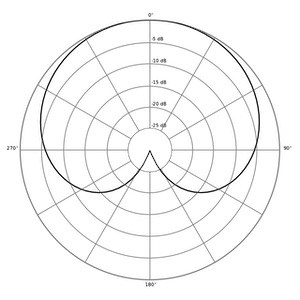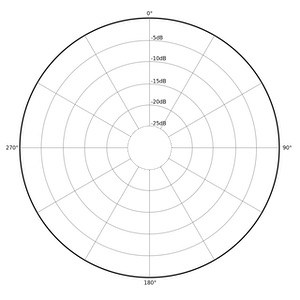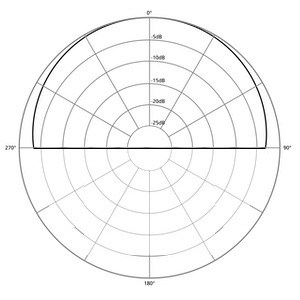Mics pickup sound from certain directions and no so much from other directions depending on the shape and style of the “Polar Pattern”.
Depending on your sound source and the other sounds in the area, choosing the appropriate pattern can help you gather just the sounds you want into the mic and leave any potential noise or bleed from other sounds out of your recordings.
The Cardioid polar pattern is shaped like an upside down heart when drawn on paper. The top of the diagram represents the front of the mic from overhead and the bottom of the page represents the back of the mic. When you are singing directly into the mics front grill on a cardiod mic, your sound will be picked up clearly but most sound from the back of the mic will be greatly reduced. This type of polar pattern is extremely well suited for applications where you want to keep your tracks isolated from each other. Place your sound source directly on the mic and align the back of the mic towards the sound you want nulled out.

Supercardioid is similar to cardioid with the a slightly tighter pattern in front of the mic with just a little extra pickup from the back.

Figure Eight polar pattern mics grab sound waves from the front and back in equal circles of coverage. One mic setup with a figure eight (biderectional) pattern can be used to mic in stereo. Here’s the trick: Copy the recording onto a second channel, flip the phase, and then pan the two signals hard left and hard right.

Omni mics grab sound from all directions relative to the capsule equally.

Finally, Boundary mics / PZM mics are design to rest against a flat surface and get sound from the vibrating air that surrounds it. They are commonly used inside a kick drum shell, on the floor, or on the wall as room mics. This type of mic is free from some of the phase issues that are encountered in everyday recording situations due to almost no reflections in its position against a boundary/barrier.

